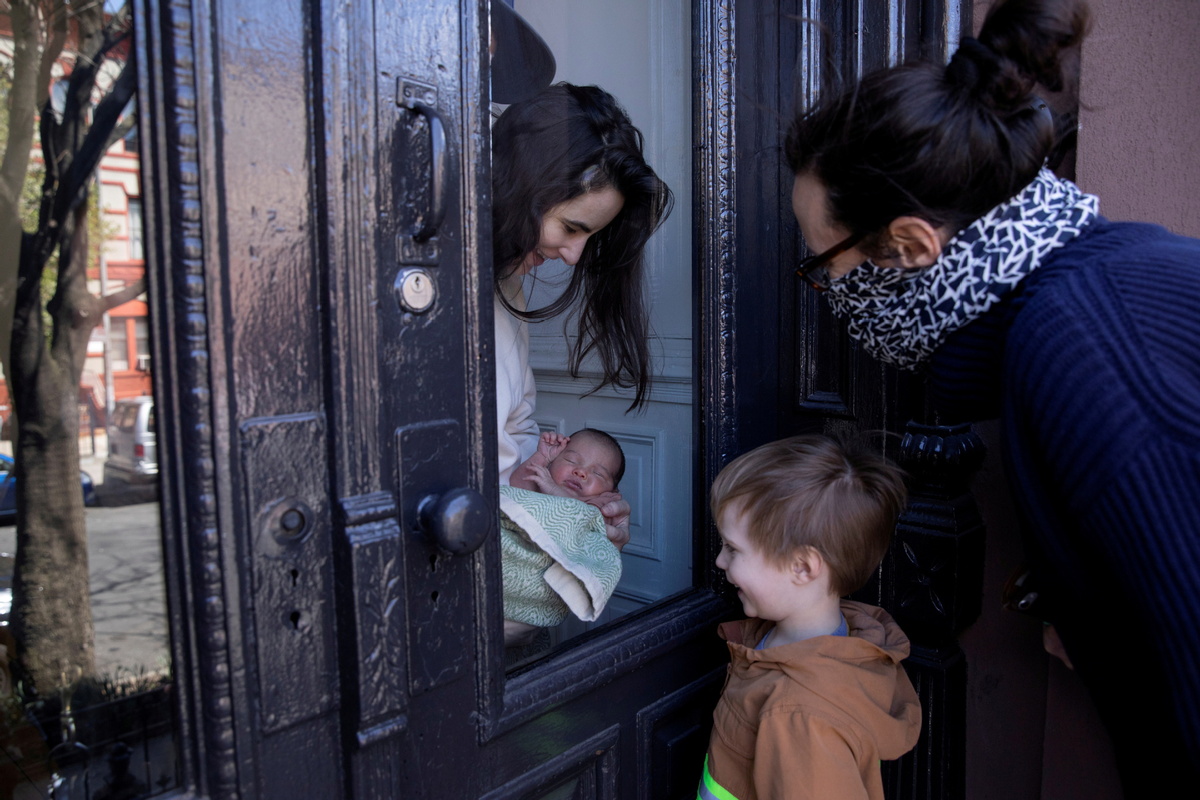US birthrates drop to record lows
By MINLU ZHANG in New York | China Daily Global | Updated: 2021-05-06 10:40

US birth and fertility rates fell by 4 percent last year, the largest decline in nearly 50 years, the government said Wednesday.
About 3.6 million babies were born in the US last year, down from about 3.75 million in 2019, new data from the US Centers for Disease Control and Prevention (CDC) show.
Births fell for the sixth consecutive year to the lowest level since 1979. When births were booming in 2007, the US recorded 4.3 million.
The rate dropped for women of every major race and ethnicity. The number of births fell 8 percent for Asian Americans, the highest decline among all ethnicities. Birthrates fell 4 percent for black and white women, 3 percent for Hispanic women and 6 percent for American Indians or Alaska Natives.
Women in all age groups contributed to the overall decline. Birthrates for all groups of women under 30 hit record lows. The birthrate was down by 8 percent among teenagers, compared with 2019, and by 6 percent among women ages 20 to 24. The rate among women in their early 20s is down by 40 percent since 2007.
The most notable of these is the teenage birthrate. It dropped considerably with births to 15-to-17-year-olds falling by 6 percent and to 18-to-19-year-olds falling by 7 percent, both hitting record lows. The teen birthrate has been falling almost every year since 1991.
Births have been declining in younger women for years, as many postponed having children and have fewer when they do. That led to declining births among young women and increasing rates among women in their late 30s and 40s. But in 2020, even older mothers had fewer babies.
"The fact that you saw declines in births even for older mothers is quite striking," Brady Hamilton, the lead author of the new report from the CDC, told The Associated Press.
The US birthrate is so low that the nation is "below replacement levels", meaning that more people die every day than are being born, the CDC said.
In 2020, the total fertility rate, which is the average number of babies a woman would have over her lifetime, was about 1,638 babies per 1,000 women. That was the lowest rate on record since the government began tracking it in the 1930s.
For a generation of Americans to exactly replace itself, those 1,000 women have to have 2,100 babies.

Even though the current generation is getting further away from having enough babies to replace itself, the US fertility rate still remains above many other developed countries that have long struggled with low birthrates, such as Japan, Italy and Germany.
The government data are based on a review of more than 99 percent of birth certificates issued in 2020.
Early in the pandemic, there was speculation that as the country went into lockdown, the lack of things to do and places to go would lead to a recovery in the birthrate.
In fact, the new data show that the exact opposite occurred. Births were down the most sharply at the end of the year when babies conceived at the start of the COVID-19 pandemic would have been born.
Births declined by about 8 percent in December compared with December 2019, the CDC said. December had the largest decline of any month.
Women typically tend to put off having babies after economic crises because of uncertainty with jobs and income, such as after the Great Depression in the early 1930s. Health experts say that the anxiety about COVID-19 and its impact on the economy likely caused many couples to postpone or think twice about having a child.
Those trends usually reverse once the economy starts to bounce back, while after the Great Recession that began in late 2007, the US birthrate continued to drop. That points to something else going on, The New York Times reported.
"It's a big social change in the US," Alison Gemmill, a demographer at the Johns Hopkins Bloomberg School of Public Health who studies fertility said. "A gradual shift of family formation to later ages."
























